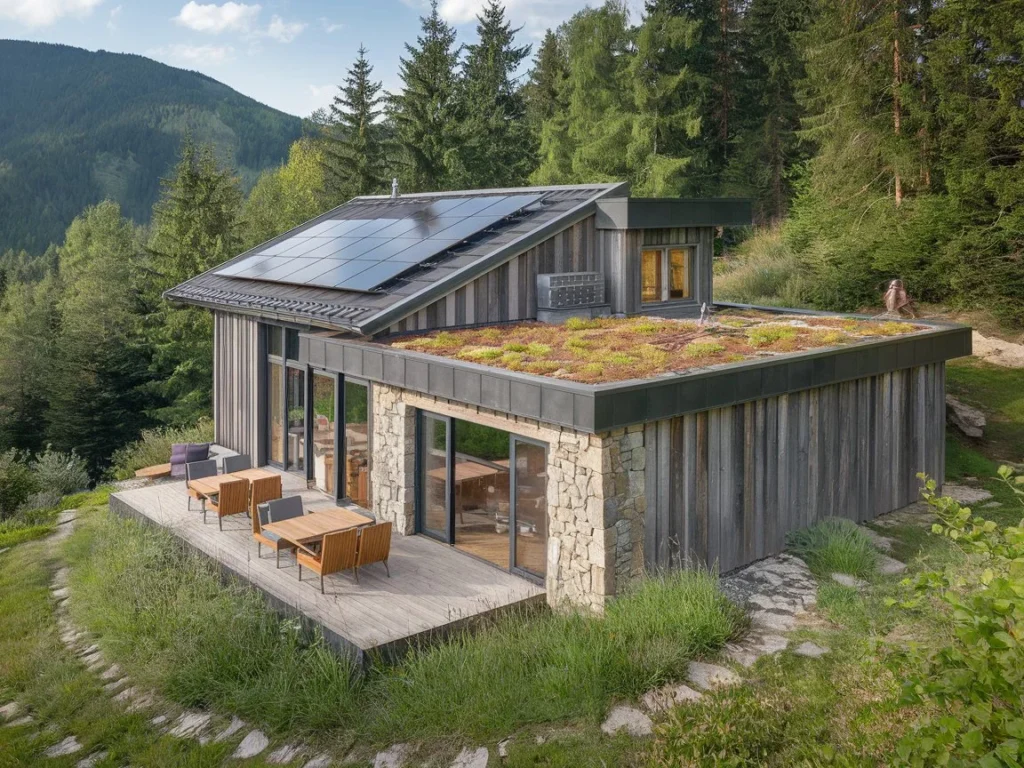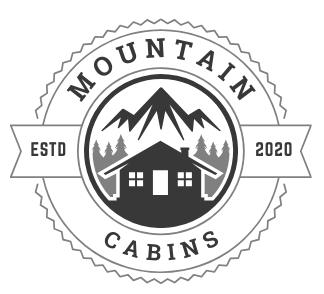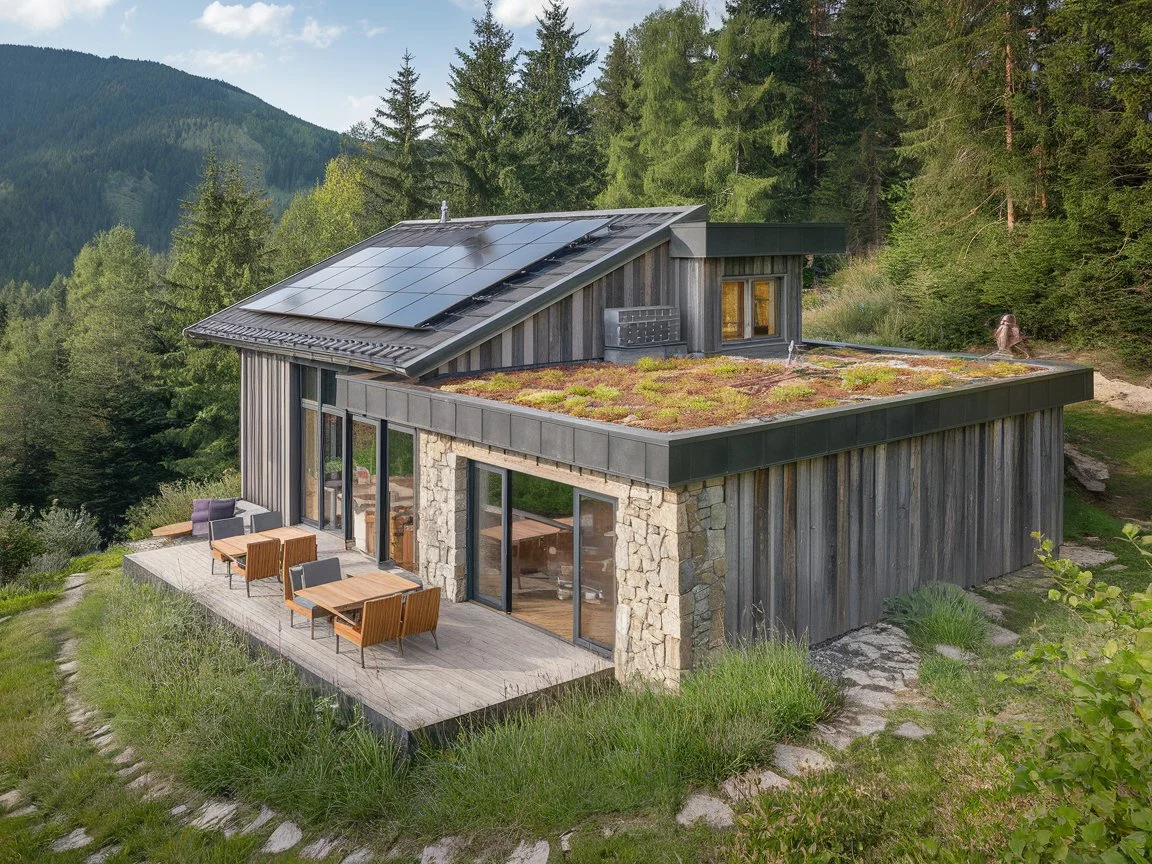
Introduction
Sustainability has become a key focus in modern architecture, particularly in remote and nature-integrated structures like cabins. As the demand for eco-friendly homes grows, more homeowners and builders are looking for ways to create cabins that minimize environmental impact while maximizing comfort and efficiency. Sustainable cabin design incorporate energy-efficient systems, eco-conscious materials, and thoughtful layouts that work in harmony with nature.
This guide explores essential principles of Sustainable cabin design, including materials, energy sources, water conservation, passive design, and eco-friendly interiors. Whether you’re building a new cabin or upgrading an existing one, these strategies will help you create a sustainable retreat that blends seamlessly with the natural world.
Choosing Sustainable Building Materials
The foundation of an eco-friendly cabin starts with sustainable materials. Choosing responsibly sourced and recycled materials reduces waste, supports environmental conservation, and enhances durability.
Reclaimed Wood & Locally Sourced Timber
One of the most popular choices for sustainable cabins is reclaimed wood. Salvaging wood from old structures reduces deforestation and gives materials a second life. Locally sourced timber is another excellent option, as it minimizes transportation costs and supports regional economies. Hardwoods like cedar, oak, and pine provide durability while adding a rustic aesthetic to the cabin’s design.
Natural Stone & Clay
Using natural stone and clay for cabin construction improves insulation, reducing energy needs for heating and cooling. Stone foundations and clay walls naturally regulate indoor temperatures, enhancing comfort year-round. Additionally, these materials require little maintenance and last for decades, making them a cost-effective and eco-friendly choice.
Recycled & Upcycled Materials
Upcycled metal, glass, and composite materials can be creatively repurposed into cabin construction. Recycled steel frames provide structural integrity, while repurposed glass windows increase natural light without increasing energy consumption. Upcycled materials not only reduce waste but also add character and uniqueness to a cabin’s design.
Energy Efficiency: Powering Your Sustainable cabin design
Energy efficiency is critical in off-grid and eco-friendly cabins. Incorporating renewable energy sources minimizes reliance on fossil fuels and reduces the overall environmental impact.
Solar Panels & Off-Grid Energy Solutions
Solar panels are among the most effective renewable energy sources for cabins. Advances in solar technology allow homeowners to store excess energy in battery systems, ensuring power availability even on cloudy days. Off-grid cabins can also integrate wind or hydroelectric power, depending on the location and available resources.
Geothermal Heating & Cooling
Geothermal systems use the earth’s natural heat to regulate cabin temperatures. These systems provide an energy-efficient alternative to traditional heating and cooling by transferring heat between the ground and the cabin. Although the initial installation cost can be high, the long-term energy savings make geothermal systems a worthwhile investment.
Smart Cabin Technology
Automated systems, such as smart thermostats and energy-efficient LED lighting, help reduce energy consumption. Smart technology allows cabin owners to monitor and control their energy use remotely, optimizing power efficiency and reducing waste.
Water Conservation & Eco-Friendly Plumbing
Sustainable water management plays a crucial role in reducing the ecological footprint of a cabin.
Rainwater Collection Systems
Rainwater harvesting systems collect and filter rainwater for non-potable uses such as irrigation, flushing toilets, and even showering. These systems reduce dependency on municipal or well water and provide a self-sufficient water source for remote cabins.
Composting Toilets & Greywater Recycling
Composting toilets break down waste without using water, making them an excellent alternative to traditional plumbing in off-grid cabins. Greywater recycling systems repurpose water from sinks, showers, and laundry for secondary uses, such as watering plants and flushing toilets.
Low-Flow Fixtures & Water-Saving Appliances
Installing low-flow faucets, showerheads, and toilets significantly reduces water consumption. Energy-efficient appliances like washing machines and dishwashers also contribute to sustainable water usage.
Passive Design for Natural Climate Control
Passive design principles enhance energy efficiency by optimizing a cabin’s natural heating and cooling capabilities.
Strategic Cabin Orientation
Positioning a cabin to maximize sunlight in winter and shade in summer improves energy efficiency. South-facing windows allow natural light and warmth to enter during colder months, reducing heating costs. Meanwhile, tree cover and overhangs help provide shade during summer.
Large Windows & Natural Ventilation
Well-placed windows promote cross-ventilation, reducing the need for air conditioning. Operable windows allow fresh air to circulate, maintaining indoor air quality and comfort.
Green Roofs & Living Walls
Green roofs and living walls provide insulation, reduce stormwater runoff, and improve air quality. These features also enhance biodiversity, creating habitats for birds and pollinators.
Sustainable Interior Design & Eco-Friendly Living
Sustainability extends beyond construction materials and energy efficiency—interior choices also play a role in reducing a cabin’s environmental footprint.
Non-Toxic Paints & Finishes
Conventional paints and finishes often contain volatile organic compounds (VOCs), which can harm indoor air quality. Choosing non-toxic, low-VOC paints improves air safety while providing an eco-friendly alternative.
Eco-Friendly Furniture & Décor
Sustainable furniture made from reclaimed wood, bamboo, or recycled materials reduces environmental impact. Choosing durable, high-quality pieces ensures longevity and minimizes waste.
Minimalist & Zero-Waste Living
Embracing a minimalist lifestyle reduces clutter and waste. Simple, functional designs encourage sustainable habits, such as repurposing materials, composting, and using refillable containers.
The Future of Eco-Friendly Cabin Living
Advancements in green building technology continue to shape the future of sustainable cabin living. Innovations such as carbon-neutral construction materials, off-grid energy storage solutions, and AI-driven smart home systems are making eco-friendly cabins more efficient and accessible.
Additionally, there is a growing trend toward self-sustaining, off-grid cabins that integrate permaculture practices, renewable energy, and water recycling. As awareness of environmental conservation increases, more homeowners are adopting sustainable living principles to reduce their impact on the planet.
Conclusion
Sustainable cabin design is more than just an architectural trend—it’s a commitment to responsible, eco-friendly living. By incorporating sustainable building materials, renewable energy sources, water conservation systems, and passive design principles, homeowners can create comfortable, efficient, and environmentally responsible retreats.
Whether you’re building a new cabin or upgrading an existing one, embracing sustainability helps protect natural resources while enhancing your quality of life. A well-designed eco-friendly cabin not only benefits the environment but also offers long-term cost savings and a healthier living space.
Start incorporating sustainable solutions today and build a cabin that supports both your lifestyle and the planet.
Explor more about Eco-Friendly Cabin Stays: Sustainable Getaways in the Mountains

